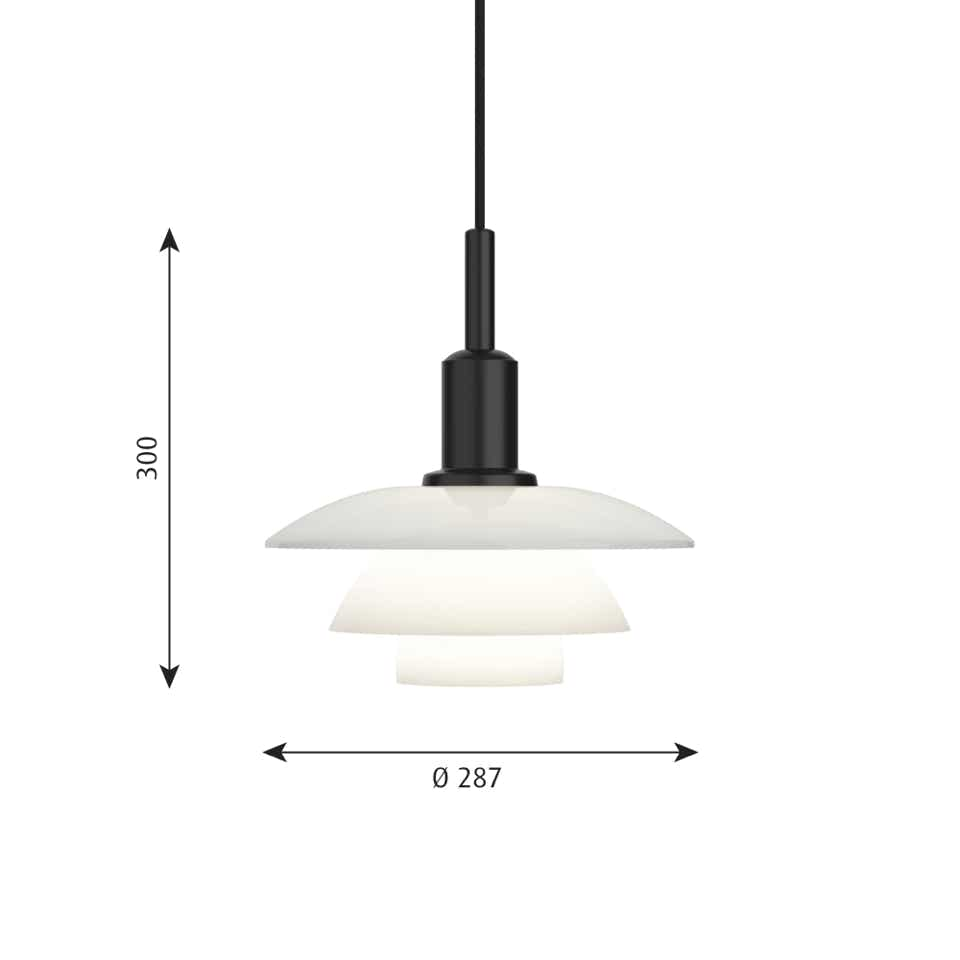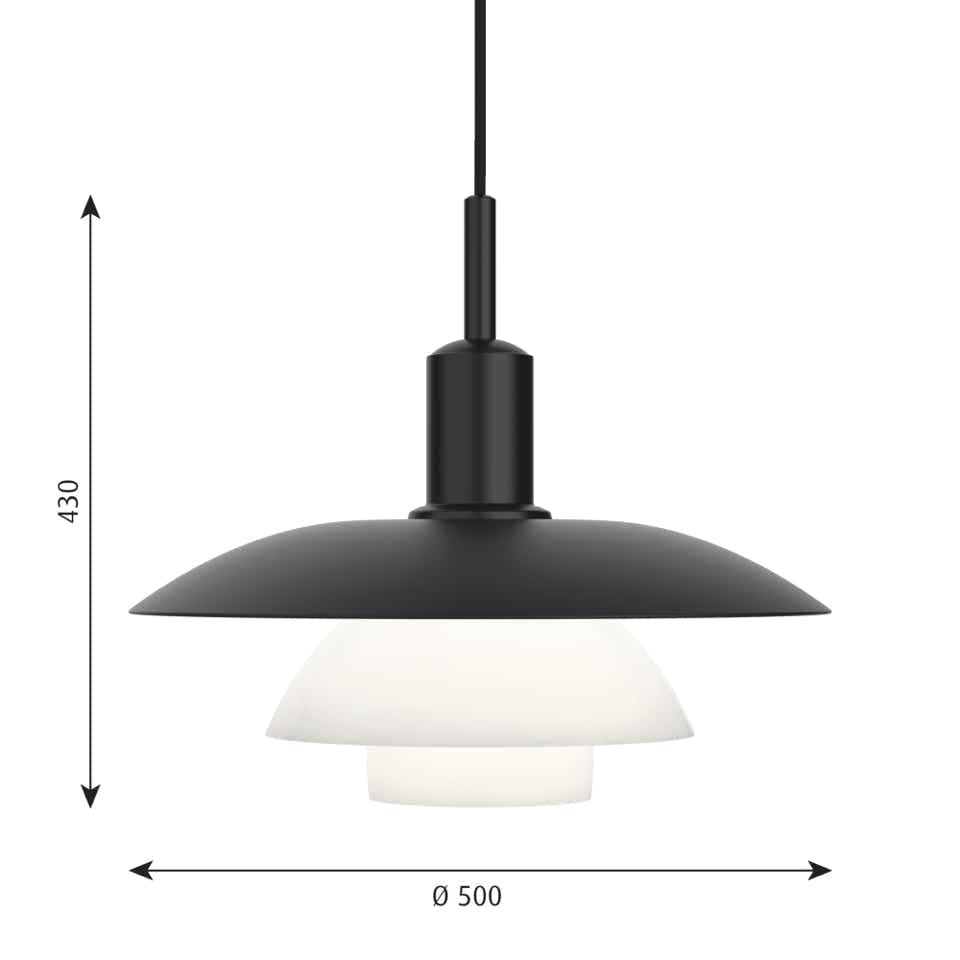15% off with DESIGN15
Poul Henningsen developed his three-shade system, designed in 1926, in hundreds of versions, varying in the size of the shade and the size ratio between the three shades.
These characteristics are reflected in the name of each lamp. The first number indicates the approximate diameter of the main shade: 50 cm for the PH5/5, just under 30 cm for the PH3/3.
The second number refers to the size ratio between the shades. In the case of the PH5/5 and PH3/3, the equal numbers mean that the shades are in a 3:2:1 size ratio.
It is this size ratio that gives these two lampshades their very round appearance, making them particularly suitable for higher hanging points.
PH3/3 and PH5/5 have an upper shade in glass or drawn aluminium, painted white on the inside, and two lower shades in opaline glass. A small central diffuser in sandblasted glass, easy to install, is supplied with the lamps for even softer lighting.
Light source E27 or LED integrated
PH3/3 Ø28,5 x H30 cm – 2,3 kg
PH5/5 Ø50 x H43 cm – 4,5 kg
Cord 4 m black textile
Shades spun aluminium, mouth blown opal glass three layers, frosted glass diffuser
Body die casted zinc
PH 5/5 – Black metal / Glass
from
PH 5/5 – Black metal
from
PH 3/3 – Black metal / Glass
PH 3/3 – Black metal
PH 3/3 – Glass


Born in Copenhagen, Poul Henningsen's mother was the famous Danish actress Agnes Henningsen. He never qualified as an architect, but studied at the Technical School in Frederiksberg (Denmark) from 1911 to 1914, and then at the Technical College in Copenhagen (1914-1917).
He started out practising traditional functionalist architecture, but over the years his professional interests evolved to focus mainly on lighting, which is what he is most famous for. He also branched out into writing, becoming a journalist and author. For a brief period at the start of the Second World War, he was chief architect of Tivoli Gardens in Copenhagen. But like many other creative people, he was forced to flee Denmark during the German occupation, and soon became a vital part of the Danish colony of artists living in Sweden.
His long collaboration with Louis Poulsen began in 1925 and lasted until his death. To this day, Louis Poulsen still benefits from his genius. Poul Henningsen was also the first editor-in-chief of the business magazine "NYT". Louis Poulsen's CEO at the time, Sophus Kaastrup-Olsen, offered PH the magazine because he had been sacked from the Danish newspaper he was working for (his views were too radical).
Poul Henningsen's pioneering work on the relationship between light structures, shadows, glare and colour reproduction, compared with man's need for light, remains the foundation of the lighting theories still practised by Louis Poulsen.
Price Guarantee
Offering design at the right price is an integral part of our work. If you find the same item at a lower price at another retailer, delivery included, we will not only match it, but even offer you a better price.
How to take advantage of it?
We compare our prices every day with all authorized retailers in Europe. If nevertheless you find cheaper, contact us for a counter-proposal.
We must be able to verify that the item is authentic, new, perfectly identical (size, materials, color, etc.)
and that it is not part of a campaign or temporary destocking.
The valid basis is, for example, a current quote or a direct link to another retailer's website where the lower price is indicated. An email image is invalid, the original email must be forwarded.
The offer does not apply to orders already placed and cannot be combined with any of our other offers or promotions.